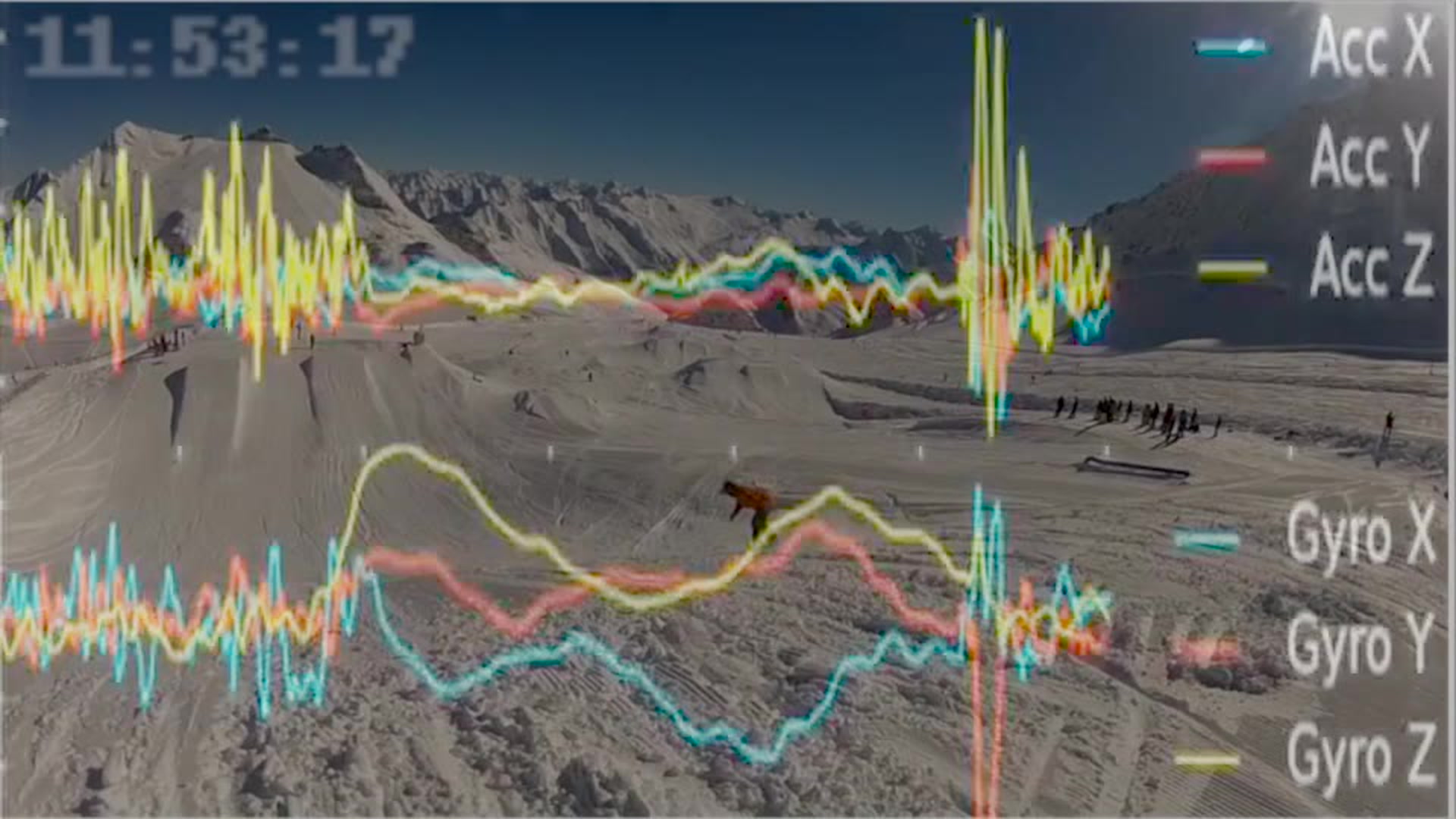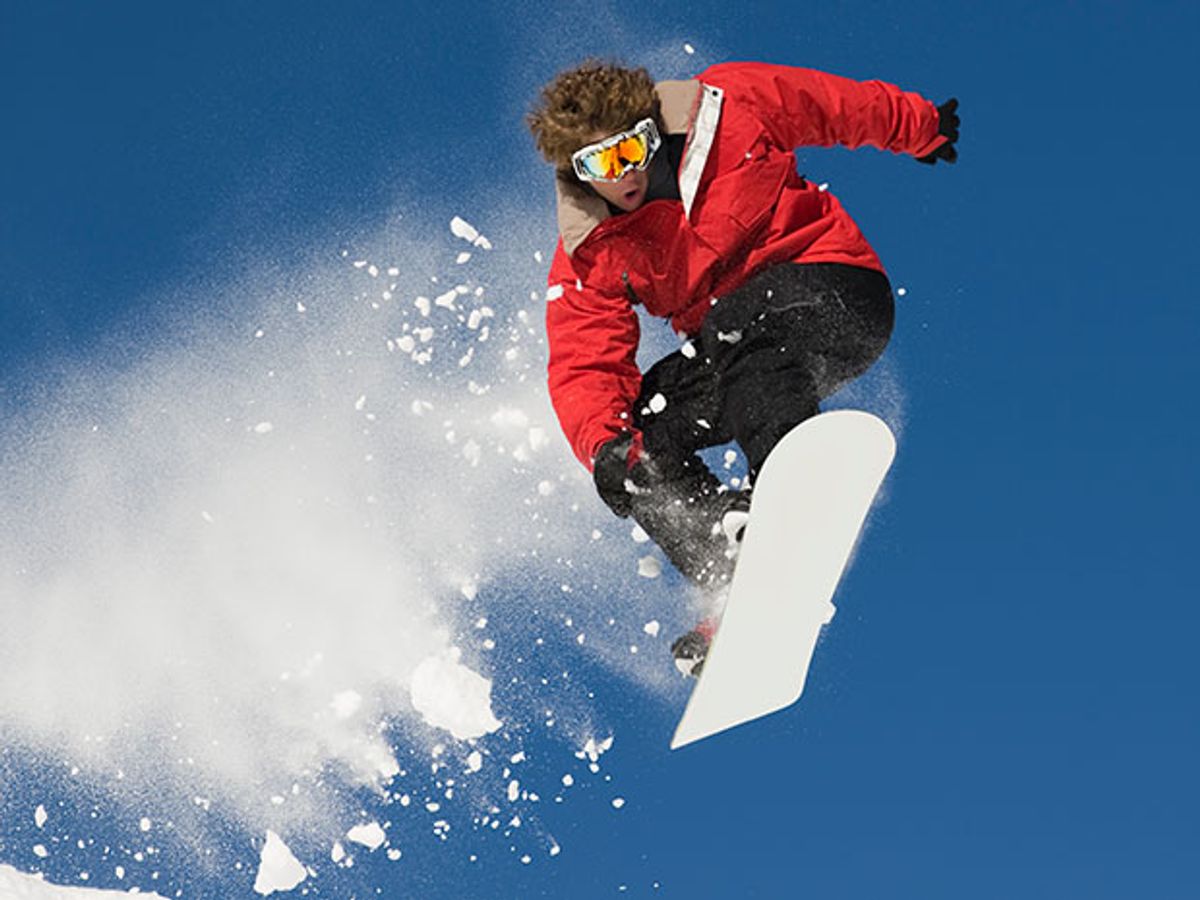It happens all the time in Olympic and extreme sports: An athlete thinks he nailed it—a snowboarding jump, a gymnastics tumbling pass—but the judges don’t agree. Based on their naked-eye view or a slow-motion video, they dock him points for things like not rotating part of his body a full 360 degrees. The not-quite-perfect camera angle leaves viewers doubtful and the athlete trudges off, shaking his head.
For those moments, some numbers from highly precise wearable or on-board motion sensors could come in handy. Prototypes of such devices are popping up in freestyle sports such as skateboarding and bicycle motocross, or BMX. Now, researchers are making headway in snowboarding too; one group presented its system earlier this month at IEEE’s Body Sensor Network Conference in San Francisco.
The system, developed by researchers at the digital sports group at Friedrich-Alexander-Universität (FAU) in Erlangen, Germany, senses an athlete’s motion and orientation along three axes using an inertial-magnetic measurement unit (IMMU). The device contains an off-the-shelf accelerometer, gyroscope, and magnetometer called the InvenSense MPU-9150. Pattern recognition algorithms developed at FAU then use the data to determine what trick a snowboarder performed.
The system falls short of determining how well the trick was executed. But that’s coming, says Ben Groh, a PhD student at FAU who co-authored the study. How completely the athlete rotated can now be deduced, and other style data will inevitably follow, he says.
The idea is to not only aid judging, but also to give athletes feedback during training and help broadcasters better communicate with spectators. Announcers from ESPN, the 24-hour sports network, broadcasting live from the X Games Austin earlier this month peppered their on-the-spot analysis with measurements taken from the Curie, a sensor device integrated into bikes that measures in-air rotations, jump height, jump distance, speed, and force on the landing. The device, made by Intel in Santa Clara, Calif., was also used in ESPN broadcasts during men’s snowboarding competitions at the X Games Aspen in January; it offered many of the same metrics.
Groh and his team plan to develop a system that takes the technology closer to a more automated digital motion analysis. The ultimate aim is a system that can identify and evaluate all the different tricks in a snowboarder’s run—something called trick classification. That’s a tall order in freestyle snowboarding, where athletes perform tricks from multiple categories, and sometimes invent new ones.
In the report presented at the Body Sensor conference, the researchers tested their device for accuracy. With the sensor duct taped to their snowboards, eleven athletes from the Bavarian and German National Teams performed 275 tricks on the slopes in Hintertux, Austria, and at an indoor snow park in Bispingen, Germany. They did jumps (airs) with 180- and 360-degree rotations, and slides (grinds) across metal boxes and rails with their boards oriented in various ways.

The algorithms correctly identified the tricks from the two categories more than 90 percent of the time, the researchers report. That’s an improvement over previous prototypes designed for snowboarding, which have focused on only a single trick category, the authors said.
Intel’s Curie device has on-board pattern recognition capabilities too, and those “can be tuned to identify specific tricks,” according to a spokesperson for the company. But those capabilities yet to be demonstrated publicly, and an Intel engineer was not available at press time to elaborate.
“The Intel device seems to me like a good prototype of a commercial product,” says Groh. “It shows the potential of wearables in sports. However, the algorithm has to be improved in order to minimize the time delay, to get more accurate rotation calculation, and finally to give the spectator more insight by integrating a trick classification.”
Groh’s algorithms have their shortcomings as well. The device couldn’t pick up on a fall that happened shortly after a landing; in other words, it stumbled when the athletes did. “If they land and then fall down within a second, judges would call that a fail, but our device wouldn’t recognize that,” says Groh. “So we’ll have to find a solution that detects what happens after the landing.”
Algorithms for skateboarding are further along, partly because testing goes faster and it’s therefore easier to conduct such studies, says Groh. No hiking up a mountain. “The challenge is to find enough athletes to do enough executions of the trick,” says Groh, who is an amateur snowboarder himself.
But no matter how accurate the device, there is perhaps a limit to how much athletes and spectators will allow a digital system to replace human judges. In freestyle sports like snowboarding, the individuality of the athlete—coolness—factors into the score. That’s something people may never want to leave to an algorithm.
Emily Waltz is the power and energy editor at Spectrum. Prior to joining the staff in January 2024, Emily spent 18 years as a freelance journalist covering biotechnology, primarily for the Nature research journals and Spectrum. Her work has also appeared in Scientific American, Discover, Outside, and the New York Times. Emily has a master's degree from Columbia University Graduate School of Journalism and an undergraduate degree from Vanderbilt University. With every word she writes, Emily strives to say something true and useful. She posts on Twitter/X @EmWaltz and her portfolio can be found on her website.



